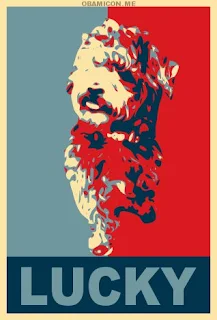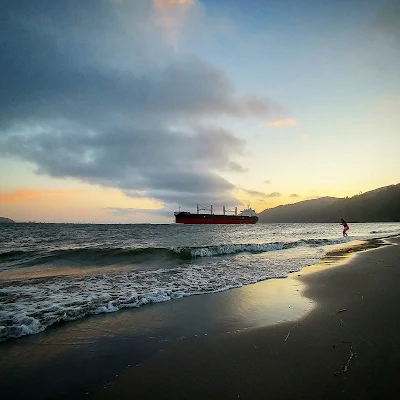“...what we’ve done, where we’ve been, the cars that we have had have been the fulcrum of our lives.”
x
“What are you going to do,” the mechanic asked. “drive this thing for 500,000 miles?”
"Probably," I said. “I can’t imagine ever letting it go.”
We bought the little blue Honda CRV two months after my oldest daughter Lindsay was born.
Next month, she graduates from high school.
When my wife Amy and I were married, I was driving a Volkswagen van and she had inherited her parents Volvo station wagon.
Yet, when we got around to having kids, I was driving a two door pickup and she had a Honda Civic coupe.
I don’t think we are the only parents to have that sudden moment of anxiety, that realization that the nurses were handing us this baby, and expecting us to be responsible enough adults to keep it alive for 18 years. Our perspective of the world and its dangers, the meaning of our lives all changed as we walked out those hospital doors on a blue-sky February morning.
With that hanging over us, driving home in a two door coupe with a three day old baby strapped into her carseat in back, each logging truck and SUV on the road home from Astoria loomed over us and threatened our little Honda civic with its precious cargo.
I poured my nervous energy into researching small SUVs that would be sit up high and be safer on the winter roads when we visited family in the Columbia River Gorge.
We found a used 1997 Honda CRV that already had 80,000 miles on it, but the mechanic said it had been well maintained and we liked sitting up higher, with the good vision of the road it provided.
Moreover, it was much easier getting the baby in and out of the car seat in the back compared with crawling over the seat of the two-door coupe. When she fell asleep in her carseat, I didn’t wake her up trying to extract her.
Change is such a overwhelming experience in our lives, the few constants can take on weighted meaning.
So much has changed since 2001.
When Lindsay was born I worked at home as a writer, but soon after I went back to school to become a nurse. The blue CRV took me through many a snowstorm to arrive at school and work in Longview and brought me safe at home again.
Yet most of the time it was the family car.
Lindsay and her younger sister Grace attended the Astoria School of Ballet for years, and the little blue CRV was my wife’s reliable transport across the river and back late at night. It was in the blue car that we started off on our many family adventures -- sledding on Mt Hood and Huckleberry picking on Mt Adams.
In the great Hanukkah Eve Storm of 2006, it got caught in rapidly rising flood waters before I could pull it out of my garage. We dried it out and it was not much worse for wear. It was stolen in 2012 from the street outside the hospital in Longview while I was working. I came out after my night shift to find an empty parking spot where it had been. It was such a humble and unassuming car that I couldn’t believe anyone would steal it.
Miraculously, it was recovered by Police in Vancouver just before it got chopped up for parts.
When I gave Lindsay her first driving lesson in the Rosburg School parking lot, it was in the CRV that we had bought just after she was born. I sat in the passenger seat giving her instructions, while glancing backward, thinking about the car seat that used to always be strapped in the back.
When she got her license, the blue CRV became “her” car. She put a hula guy on the dashboard and drove off to school with her younger sister and our exchange student riding along. I trusted her with this responsibility somehow. It wasn’t the car -- with its all wheel drive and its airbags and antilock brakes -- but the girl driving it.
At the start of her senior year, Lindsay came back from one of her many trips across the state as part of her student leadership activities renewed with ambition. She wanted to take jazz band in Ilwaco. Naselle High School didn’t offer jazz band and she was wanting to challenge herself and grow as a saxaphone player, to try something new.
I was skeptical. The class started at 7 am, and that meant she’d need to leave the house by 6 am every weekday morning for the long drive. Most teenagers like to sleep in and I didn’t think this adventure would last. Instead, she unerringly wakes before anyone else in the house and gets herself out the door before the sunrise.
The rewards for that effort have been enormous, she’s made new friends, grown as a musician, performs amazing solos during the band’s performances.
She also takes advantage of the Grays Harbor College facilities in Ilwaco for her running start college classes. Her senior year and she is technically attending classes at two high schools -- Ilwaco and Naselle -- while earning college credits.
The blue CRV has become the symbol of Lindsay’s ambition and independence for me as well as her reliability. She even checks the oil -- because at 313,000 miles, it does burn a little. The back hatch is stuck shut and the air conditioner doesn’t work, but the plucky little thing just keeps on running.
In the Fall, Lindsay will be off to Washington State University and will leave the little blue CRV at home -- parking fees on campus are almost as much as tuition.
That will work out fine, because her younger sister starts driving lessons soon.
UPDATE: After her first semester as a student at WSU, Lindsay missed her car. So when she came home and took it to school, we found a nice used 2007 CRV with 200,000 miles on it because, as my wife says, "we couldn't imagine life without a CRV."
UPDATE: After her first semester as a student at WSU, Lindsay missed her car. So when she came home and took it to school, we found a nice used 2007 CRV with 200,000 miles on it because, as my wife says, "we couldn't imagine life without a CRV."
-30-



























